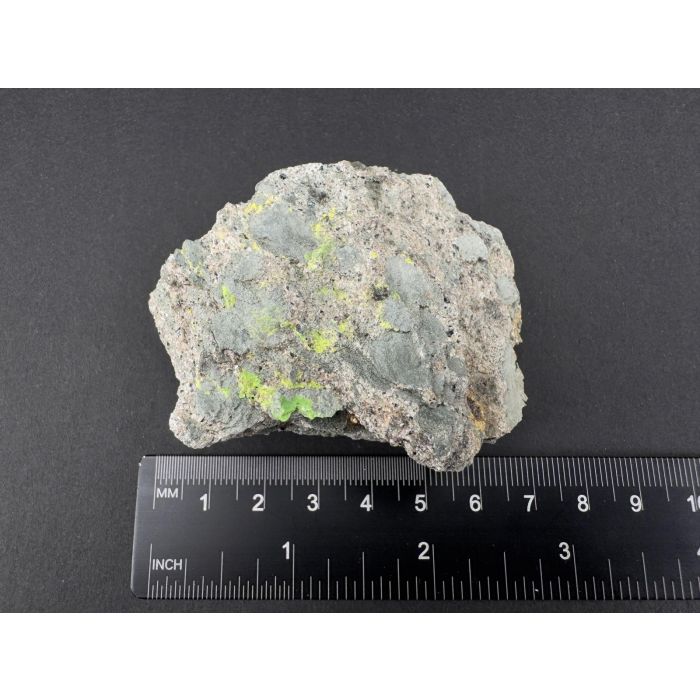Embedded Andersonite crystals, UV-active, from Ambrosia Lake, Grants, NM, USA – small cabinet specimen as unique piece
This small cabinet specimen features embedded yellow-green Andersonite crystals on grey rock. The crystals are not freestanding but clearly visible as fine grains and crusts. Especially striking is the strong color contrast and the intense fluorescence of the Andersonite under UV light, making this piece attractive for fluorescence collectors.
Andersonite is a hydrated sodium-calcium uranium carbonate and belongs to the group of rare secondary uranium minerals. It typically crystallizes in dry, oxidized zones of uranium deposits and is well known for its strong UV-reactivity. Specimens of this quality are rare and sought after in systematic collections.
Geology & Origin:
Ambrosia Lake near Grants, New Mexico, is part of the Grants Mineral Belt, one of the most important uranium mining districts in the USA. The deposit is characterized by porous sandstone beds, where uranium minerals are secondarily altered by carbonate-rich solutions. Andersonite forms here as a characteristically fluorescent secondary mineral and represents a classic example of such geochemical environments.

